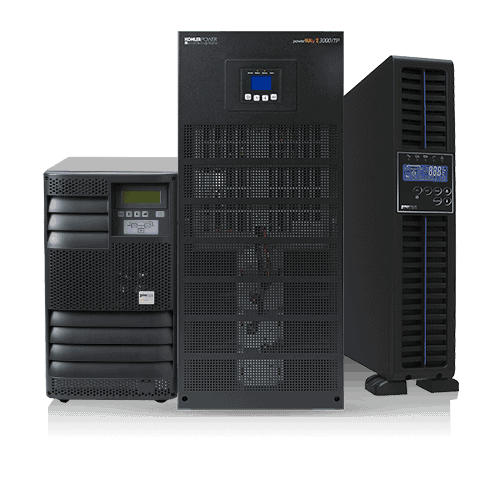IT systems, once simply a useful productivity aid, have now become vital to the success or even survival for organisations of all sizes – yet their critical contribution can be compromised by a power loss or even just an aberration of a few milliseconds, let alone an extended power blackout. Not only the ICT hardware may be damaged; the loss of data and service continuity, and consequential the harm to reputation, will likely be far more serious.
But what are the chances of a power outage actually happening? The UK Power Networks website provides an informed answer; it says that ‘with more than 170,000 km of electricity cables to maintain, power outages will sometimes happen…’ A snapshot from elsewhere on the site revealed a total of 14 current power cuts just in London, South and East England.
Putting these two realities together – critical ICT system vulnerability and the significant chance of power problems – shows that it’s not a question of ‘Do I need a power protection system’ but rather one of ‘Which type of power protection solution is best for my site?’ Accordingly, this post looks at the options available to secure a level of UPS power protection appropriate to your ICT installation’s criticality.
The first decision relates to whether a UPS alone will provide sufficient power protection, or if the UPS should be backed up with a standby generator. For enterprises that must keep their services online at all times, a generator is essential, as it can provide ongoing power indefinitely once the UPS’s battery autonomy is exhausted. Where an interruption to service can be tolerated without damage to customer relations or reputation, a UPS alone can suffice. Its role then is to protect the critical load from power transgressions during normal operation and to use its battery autonomy to facilitate a graceful system shutdown during an extended power failure.
Once the decision to buy a UPS system is made, the next choice concerns the level of power protection you’re looking for. UPS systems have two fundamental topology types; off-line (including line-interactive variants) and on-line.
Off-line UPSs pass power directly from the raw mains during normal conditions, through their bypass line, to the load. The load is transferred to the inverter if the mains fails or if the voltage transgresses preset limits. By contrast, on-line UPS systems feed the load from their inverter output during both normal and abnormal conditions.
The off-line UPS system’s advantages are its lower capital and operating costs, but it subjects its load to poor regulation and any power aberrations arriving from the mains supply during normal operation. The load also suffers a typical 2 – 10 ms power interruption during transfers between the inverter and bypass line. If your load can tolerate these interruptions, and the transient filtering provided by the off-line UPS system is considered sufficient, it may be a viable choice. However, most users with critical loads select on-line UPS solutions, to benefit from the continuous and truly uninterrupted power protection they provide.
Finally, the availability of the UPS itself must also be factored in; fortunately, with most modern UPS architectures, this can be very high. The best approach is to use a modular UPS system with ‘hot-swap’ capabilities. Modules can be incrementally added to build scalable UPS systems with efficient redundancy, while hot swappability means that MTTR times are minimised. Both these factors contribute to today’s high UPS availability figures.
Overall, modern UPSs can provide a level of power protection appropriate to the needs of your particular site – but it’s well worth talking through the options available with a UPS supplier that can demonstrate deep expertise and a well-established track record.





